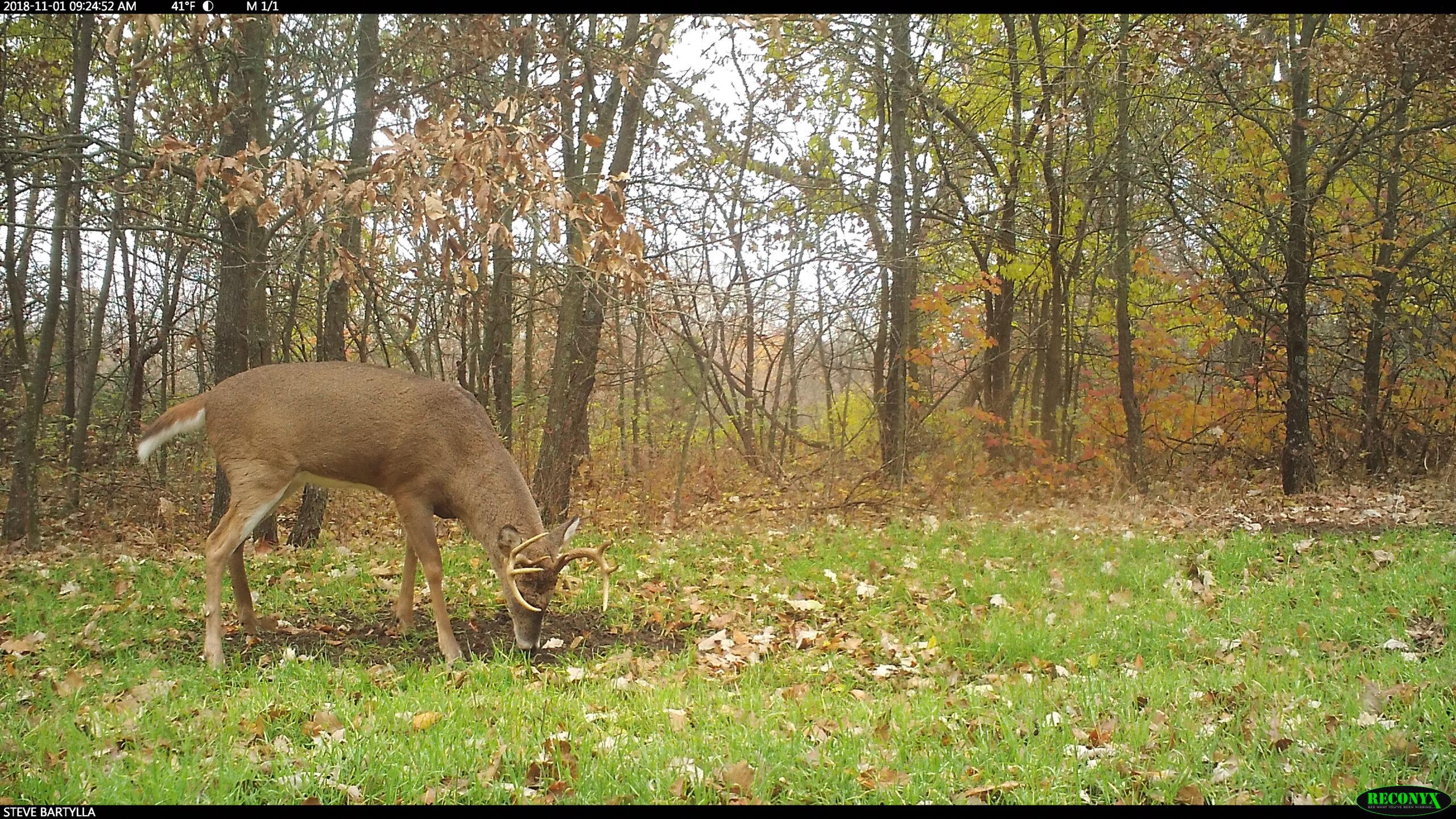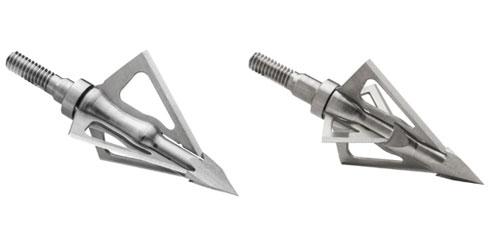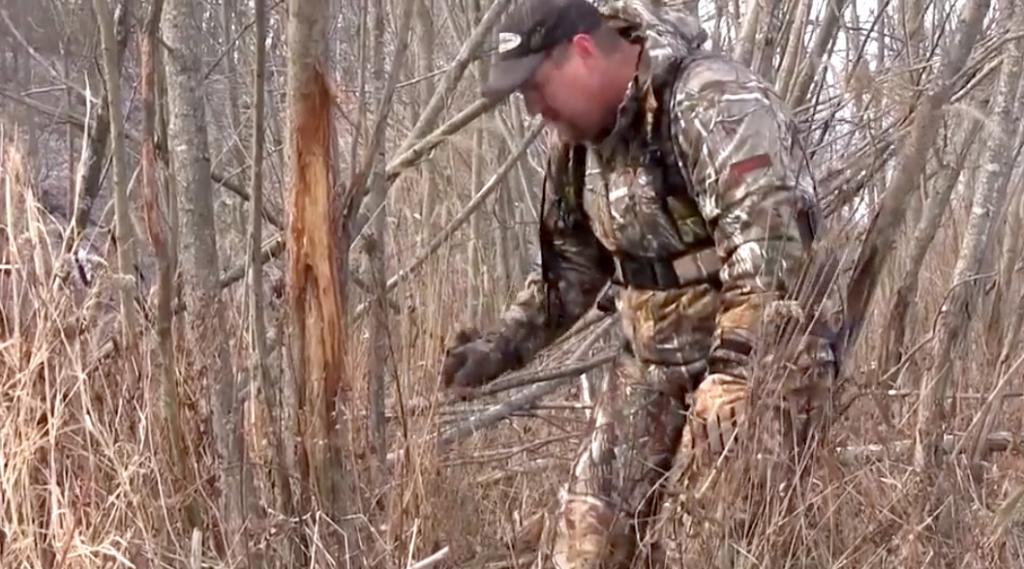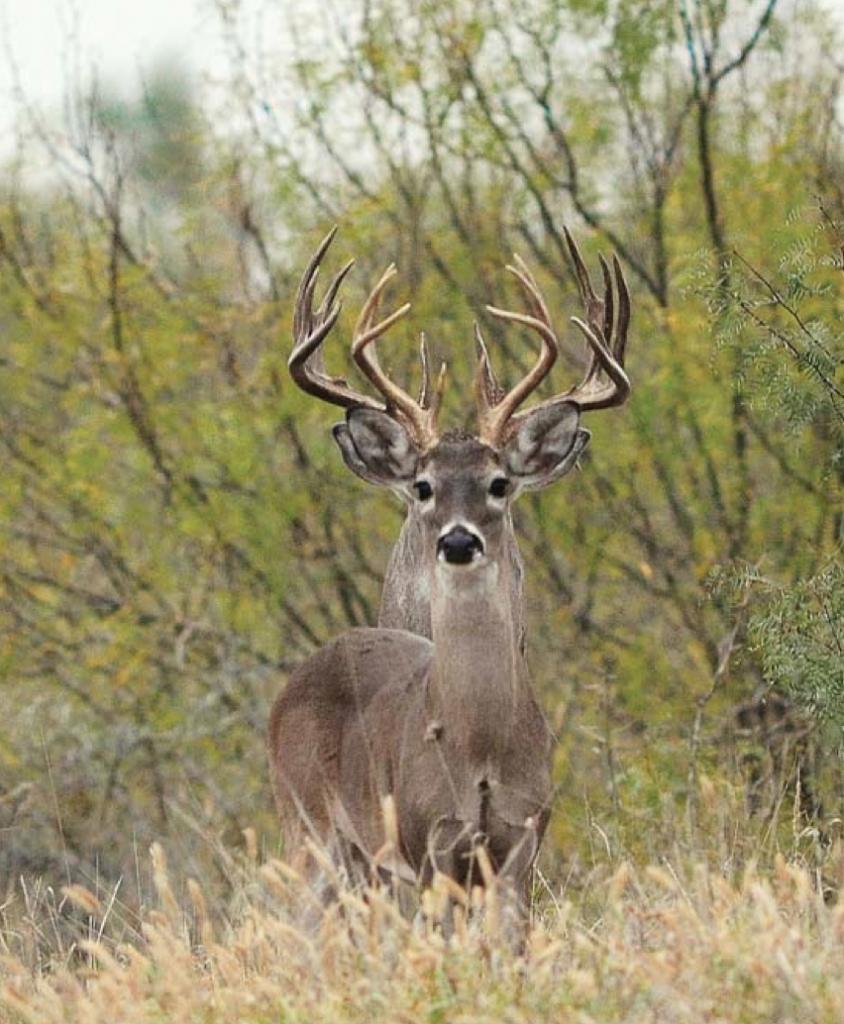I should have known better and been frustrated by the results. Truth be told, I did know better. The ground targeted for a 1-acre alfalfa patch hadn’t been previously broken. Going from an overgrown meadow to alfalfa is a really big lift, particularly in an area that does not offer good soils. I knew better, but the owner asked that I try my best. So, I did.
By late summer, it was painfully obvious that the alfalfa plot wasn’t happening. In fact, I was mildly surprised that I had close to 10% of a stand growing, especially with the weather being so uncooperative that year.
Luckily, I had a plan, which greatly reduced the frustration factor. On Sept. 1, the alfalfa plot was turned under and cereal rye hit the dirt. Jump to mid-November and I honestly lost count of how many different bucks I saw exit the nearby standing corn and enter the three parts Antler King Fall-Winter-Spring, and one part Antler King Lights Out Forage Oats plot. The reason that the owner had wanted alfalfa was because he believed it could draw the deer out of the sea of corn and beans in the area to feed on the alfalfa. All along, I knew if the alfalfa failed, cereal rye would do the trick, and it did.
About an hour before dark one evening, the buck I was after travelled through the corn, popped into the woods and walked into the cereal rye, at about 12 paces from me, when my SEVR-tipped bolt vanished into his boiler room.
If there was only one crop that I could ever plant again for deer, narrowing it down to the top two would be instantaneous. There’s no question in my mind that it comes down to clover and cereal rye. The cereal rye — specifically Antler King’s Fall-Winter-Spring — would win after a few moments of analysis. It truly is nature’s soil builder and all-around deer food. Here’s why.
It Starts in the Soil
When it comes to thriving food plots, the soil is the foundation upon which they are built. In the most simple terms, plants can thrive in good, healthy soils, yet never reach their growth and nutritional potentials in poor-quality soils. You want healthy plants? The soil must provide them with their needs or you will be using a lot of foliar fertilizers that are sprayed directly on the plants. If the plants don’t get what they need they simply can’t produce, and improving the soil is almost always the most effective way of providing those necessities. Out of all of the plantings available, cereal rye is the one that I use that benefits the soil the most.
It all happens because cereal rye is a very effective builder of OM (organic matter) in the soil. OM is plant and animal residue that breaks down in the soil to form humus. In turn, humus is organic material that has been converted by microorganisms to a resistant state of decomposition. Once in its stable state, those materials are done breaking down and are viewed as OM.

According to The Noble Research Institute, “Organic matter is a reservoir of nutrients that can be released to the soil. Each percent of organic matter in the soil releases 20 to 30 pounds of nitrogen, 4.5 to 6.6 pounds of P2O5 and 2 to 3 pounds of sulfur per year. The nutrient release occurs predominantly in the spring and summer, so summer crops benefit more from organic-matter mineralization than winter crops.”
At the same time, OM acts like the soil’s sponge. We all know that traditional food plots need water to grow. In fact, rain and the lack of it probably causes farmers and food plotters more stress than any other factor.
Generally speaking, the higher the OM levels in the soil, the more precipitation is absorbed into the soils and the less runs off. That moisture is then stored in the soil comparatively longer the higher the OM levels are. At the same time, OM is improving soil structure, which also enables the soil to take up and hold more water, as well.
Finally, higher OM levels help reduce erosion. Again, from The Noble Research Institute, “This property of organic matter is not widely known. Data used in the universal soil loss equation indicate that increasing soil organic matter from 1% to 3% can reduce erosion 20% to 33% because of increased water infiltration and stable soil aggregate formation caused by organic matter.”
The reason that cereal rye is such a powerful OM builder is because of its robust dicotyledonous root system, with a very deep tap root and a vast network of smaller offshoots, with the root system looking much like an upside-down Christmas tree, minus the decorations. Its ability to dig very deep is the key behind cereal rye going dormant when temperatures are below freezing, then to immediately spring to life during a thaw. It also is why cereal rye is able to mine nitrogen and potassium from deep in the soil, bringing it close enough to the surface for future plantings of shallow-rooted plants to benefit from.
Add it all up and if there is another planting that draws deer like crazy that can touch cereal rye’s abilities to improve the soils, I don’t know what it is.
Feeding Deer
As impressive as cereal rye is at building soils, it’s equally impressive as a deer feeder. Planted in late summer or early fall, it offers a pretty darn stable 15% protein until it starts kicking into grain production, the following summer. That’s not bad at all.
Better still, it’s how cold-friendly cereal rye is that really nudges it over the line. That same, deep and comparatively expansive root system that is so fantastic at building OM, also allows the plants to merely go dormant when the temperatures dip below freezing. When the temps rise and the soil thaws, the plants kick right back to growth mode, until mature.
The importance of that can’t be stressed enough on quite a few levels. For those that experience intermittent winter thaws, you can often get new growth spurts while almost all of the other plant life is still dormant.

For as great as that can be during the winter, it’s really in the spring when cereal rye’s ability to jump to life can be worth its weight in deer-saving gold. That late winter, early spring period also happens to be when bucks and does need highly digestible protein the most, due to growing antlers and fawns.
Those of us that live in areas experiencing legitimate winters tend to stress how hard the winters are on deer, and for good reason. Whitetails in regions that deal with truly tough winters typically run negative energy balances all winter long. That means it takes them more calories to live than they are able to derive from their comparatively poor-quality winter food sources.
Here’s the rub, though. For as hard as winter can be on deer, it’s very often the period between thaws and eventual spring green up that can be the true kiss of death to struggling whitetails. Those two- to four-week periods between snow melt and spring green up are great for us not having to walk through snow, but sticks, buds and dead grasses and weeds are still negative energy balance foods for deer. That delay before spring green up is the final straw for a lot of “winter-killed” deer.
Cereal rye plantings nearly eliminate that stretch. Rather than talking weeks to more than a month before kicking back to life, cereal rye is talking days. The ability to have a 15% protein, easily digestible food source within days of the thaw, as opposed to weeks or more, can be a really big deal, in addition to all of those feeding windows during winter thaws. Cereal rye can be a deer’s best friend when it experiences a tough winter.
An added bonus, as revealed by the parade of deer that I saw on my opening hunt, as well as countless others hunting over cereal rye, deer don’t wait until winter to start feeding heavily on it. Although I’ve seen deer feed on it from its emergence on, I’d really consider it to be a prime midseason draw for deer feeding.
Deer like greens for a bunch of different reasons. One of which is that a diversity of food helps their stomach biology break down other foods, as well. I very easily could be wrong about this, but I suspect that’s why cereal rye really starts getting hot as other greens mature and die. Whether my speculation around the motive is correct or not, by mid-October, I expect the cereal rye plots to start heating up, sooner if one travels north, a bit later as one goes south.
From then on, I expect cereal rye to draw as well as corn, beans, brassicas or just about any other prime food plot plantings. Sure, one day they’ll want beans more than anything else, another day corn or brassicas, but cereal rye will hold its own with all of them. As a bonus, when over-browsed it merely grows more, unlike those other popular plantings.
Best Uses
For as much as I love cereal rye, I next to never plant it alone. To start with, I am always mixing three parts Antler King Fall-Winter-Spring, and one part Antler King Lights Out Forage Oats. I do that because the oats are a slightly better early-season draw. To get the maximum from the soil building and weed control, I go with a heavy seed rate. When planting as a stand-alone crop, I’ll go 150-200 pounds per acre of the 3:1 mix of Antler King Fall-Winter-Spring and Antler King Lights Out Forage Oats.
Due to how ridiculously easy cereal rye is to grow, along with its tremendous soil-building qualities, it’s almost always my planting of choice for the first two to four years of a new plot’s life. When transforming meadows, CRP fields and other previously unbroken ground, including clearing plots in the woods, planting cereal rye the first few years helps build the soils to the point where more delicate crops can then follow.
Planting at the higher rate also helps take advantage of cereal rye’s abilities to allelopathically suppress weed growth by releasing its own form of herbicide. At the same time, the cereal rye offers the impressive ability to create physical barriers that the weeds can’t get through. Added up, and it’s a fantastic choice for new plots with seedbanks of weeds and grasses that are just waiting to take over the plot.

The other major use that I have for the 3:1 mix of Antler King Fall-Winter-Spring and Lights Out Forage Oats is top seeding into other plantings, specifically corn, soybeans and brassicas. For the corn and beans, as they start to turn colors, I’ll walk down the rows with a hand seeder, tossing about 100 pounds per acre of the 3:1 mix on top of the dirt.
For the brassicas, I wait until the they grow 4 to 6 inches tall and top seed at the same rate into them. So, because cereal rye germinates so easily, I can consistently, successfully get away with merely throwing the seeds on top of the dirt into those annual plantings. With that being said, it’s always a good idea to top seed before a day long soaking rain shower.
The beauty of this method is multifaceted. We are getting both the soil-building and weed-control benefits of the cereal rye. At the same time, we’re jacking up the tonnages of food production from the plot, and as our initial planting is consumed by deer, the cereal rye fills in the gaps, continuing to feed them. Finally, it adds a diverse food offering to the plot.
Conclusion
If I had to choose just one planting for food plots, it would be cereal rye. When you add together its abilities to draw in deer, feed them during their most critical time periods and do wonders for the soil, what more could you truly want? It even works great to let it grow all of the following summer, then spray it in fall, top seed more of the mix into the old plot and drag last year’s cereal rye down flat. Do that and you can cut way down on seed, as last year’s crop will germinate as well.
— Steve Bartylla is host of “DeerTopia” on Pursuit Channel as well as two online series: “Grow ’em Big” and “Hunt ’em Big.”
D+DH In-Depth is our premium, comprehensive corner on America’s No. 1 game animal. In this graduate-level course, we’ll teach you about deer biology, behavior, and ultimately, how to become a better hunter. Want to be the first to get our premium content? Become a D+DH Insider for FREE!



